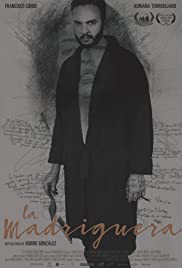
THE MUMMY'S HAND
US, 1940, 67 minutes, Black-and-white.
Dick Foran, Peggy Moran, Wallace Ford, Eduardo Cianelli, George Zucco, Cecil Kellaway, Charles Trowbridge, Tom Tyler, Siegfried Arno.
Directed by Christy Cabanne.
Films about Egyptian archaeology have been popular over the decades. And, from the 30s, through the Brendan Fraser popular films, to Tom Cruise in 2017, there have been popular thrillers featuring the Mummy (starting with Boris Karloff for 1933).
This version is from Universal Studios. While Dick Foran is a genial if unlikely archaeological expert, Eduardo Cianelli as the sinister high priest fills the bill as does George Zucco as his sinister contemporary counterpart. Along for the ride are Wallace Ford as the semi-dumb, humorous sidekick and Cecil Kellaway has a rather dignified magician – plenty of tricks – on tour in Egypt with his daughter, Peggy Moran.
The film opens with some hocus-pocus about a high priest, a professor succeeding him, about a mysterious character who was buried alive but is forever sustained in breathing by a particular plant. The professor wants to become immortal.
With the two Americans out of a job, wandering through an Egyptian market, they come across a broken vase which seems to indicate the burial place of the Princess. Consulting with the sinister professor, he denies that it is authentic. The Americans encounter the magician in a bar, persuade him to finance their expedition, the initially reluctant daughter coming along as well.
There are all kinds of shenanigans in the location for the dig, the finding of the tomb, the local workers all fearfully running away, the resurrection of the long-dead character, the presence of the professor and his associate, whom they had encountered as a beggar in the market. There are deaths, including the guard as well as an accompanying professor. It all builds up to a confrontation, the mummy carrying the daughter in to be sacrificed, the professor wanting to inject her and himself to become immortal, some shooting and a final rescue.
The film is directed by Christy Cabanne, who began work in the silent era in 1914 and continued to make small-budget films, 166 of them, until 1948. Some of the dialogue in this film is rather basic as are the performances of the main characters – so the impact relies on the sinister presences.